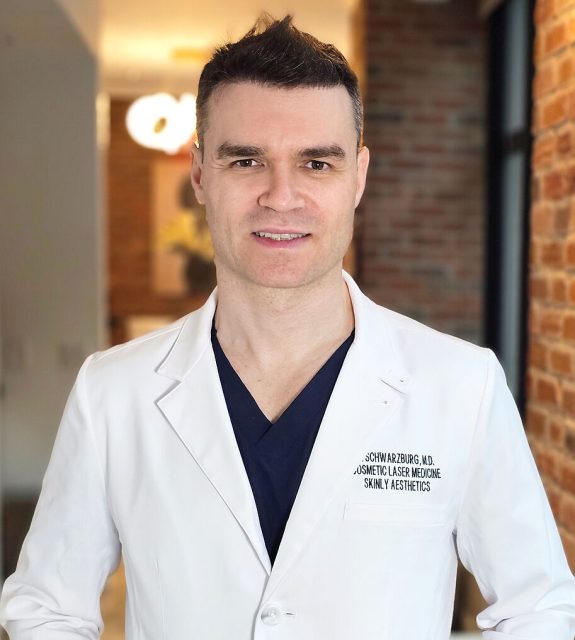Eric Shiah, BA, contributed to this article.
 Photo Credit: ShutterstockDr. Samuel Lin is a double board-certified Plastic Surgeon and Associate Professor of Surgery at Harvard Medical School who practices in Boston, Massachusetts. Dr. Lin is an active Board Member of the Susan G. Komen for the Cure and Bright Pink Foundations. Dr. Lin is active in both basic science and clinical research with a focus on face/neck/nose surgery (rhinoplasty), breast surgery (reduction, lift, and reconstruction), and body contouring. He collaborates with engineers, scientists, and other plastic surgeons at other institutions within the New England area, nationally, and internationally. He is the editor of several medical textbooks including Aesthetic Atlas of the Head and Neck, Atlas of Body Contouring, and Plastic and Reconstructive Surgery Pearls of Wisdom and Pearls of Wisdom Second and Third Editions. Haute Beauty Expert Dr. Samuel Lin discusses that with time, your nose shape and size can change with age and how rhinoplasty can be a solution.
Photo Credit: ShutterstockDr. Samuel Lin is a double board-certified Plastic Surgeon and Associate Professor of Surgery at Harvard Medical School who practices in Boston, Massachusetts. Dr. Lin is an active Board Member of the Susan G. Komen for the Cure and Bright Pink Foundations. Dr. Lin is active in both basic science and clinical research with a focus on face/neck/nose surgery (rhinoplasty), breast surgery (reduction, lift, and reconstruction), and body contouring. He collaborates with engineers, scientists, and other plastic surgeons at other institutions within the New England area, nationally, and internationally. He is the editor of several medical textbooks including Aesthetic Atlas of the Head and Neck, Atlas of Body Contouring, and Plastic and Reconstructive Surgery Pearls of Wisdom and Pearls of Wisdom Second and Third Editions. Haute Beauty Expert Dr. Samuel Lin discusses that with time, your nose shape and size can change with age and how rhinoplasty can be a solution.
Did you know that the appearance of your nose changes over time?
Like the rest of our body, our nose changes in shape and size with age. While the nose experiences the most physical change during puberty, it continues to change as one ages. It can increase in height or width, and even rotate slightly forward. There are numerous age-related changes that affect the overall appearance and function of the nose.
Why does this happen?
The nose is made up of bone, cartilage, and soft tissue. The structures offering support for the nose can lose strength over time, resulting in potential stretching and sagging of the nose. Glands and pores may also enlarge, causing an overall widened appearance. In addition, factors such as nasal allergies, diabetes, nasal trauma, sun damage, and nicotine use can accelerate changes to the nasal contour.
Rhinoplasty for the Aging Nose
What can be done to correct undesired changes to nose contour? A rhinoplasty procedure, more commonly referred to as a “nose job,” can be performed to improve the overall appearance of the nose. Although most people seeking rhinoplasty are in young adulthood, specifically 20s and 30s, a rhinoplasty offers many of the same benefits for those in later adulthood. There is no age limit for a rhinoplasty procedure – one must only clear pre-operative assessments like with any other surgery.
While age-related changes of the nose are entirely normal, it is understandable that they may not be preferred. Rhinoplasty for an aging nose can help an individual achieve a more youthful appearance, create facial balance, correct drooping, and improve function (e.g. reduce nasal obstruction). Cartilage within the nose can be repositioned, reduced, and reutilized to improve the nasal tip appearance. Unlike many younger patients who seek rhinoplasty for more drastic changes, most patients concerned about an aging nose seek small changes for a subtle, natural-looking result.
 Photo Credit: ShutterstockNoses After Rhinoplasty Age, Too
Photo Credit: ShutterstockNoses After Rhinoplasty Age, Too
It is important to be aware of a common misconception that once a rhinoplasty is done, the nose is permanently set. A nose that has undergone rhinoplasty can still go through age-related changes for decades, including changes in appearance and sagging.
Many rhinoplasties performed for patients in their 20s and 30s are reductive, meaning cartilage or bone was removed to make the nose smaller. Although the aesthetic benefits are immediate upon recovery, the loss of the bone and cartilage may end up decreasing the overall nasal structural strength. In the long-term, it can also make a nose that has previously undergone surgery more susceptible to the effects of aging.
For these reasons, it is important to see a board-certified plastic surgeon when considering rhinoplasty. Board-certified plastic surgeons who commonly perform rhinoplasty are often in the best position to use advanced rhinoplasty techniques, such as reinforcing areas of the nose with the cartilage that was removed to maintain the appearance and strength of the rhinoplasty as it ages. With the use of time-proven surgical techniques aimed at producing long-lasting results, an aging rhinoplasty may become less of a concern.
For more information, visit Dr. Samuel Lin's social media:























